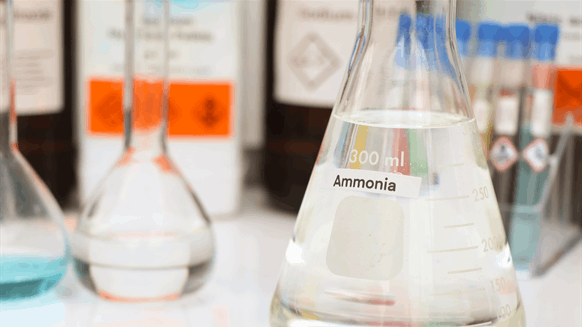Mitsubishi Shipbuilding Co Ltd has signed an agreement for technical studies on technologies that would allow ammonia to be used to power ships.
The deal with Winterthur Gas & Diesel AG (WinGD) will test the gas commonly used for fertilizer in “large, low-speed two-stroke marine engines” currently being developed by the Swiss company, Mitsubishi Heavy Industries said Group (MHI) in a press release on Monday. The memorandum of understanding (MOU) was signed on June 2.
“The recently concluded MOU reflects the desire of both companies to contribute to the achievement of the International Maritime Organization’s (IMO) decarbonisation target for greenhouse gas (GHG) emissions from the maritime industry” , said MHI, parent of Mitsubishi Shipbuilding.
The engine model that WinGD is developing, called X-DF-A, is designed to run on ammonia. “Mitsubishi Shipbuilding will now work with WinGD in studying the technologies to develop and commercialize the ammonia fuel supply system for the X-DF-A engines,” the announcement said.
“Ammonia, which does not emit CO2 when burned, it is attracting attention today as a fuel that contributes significantly to the reduction of GHG emissions in the maritime industry, and is expected to be used as a stable and clean energy in the future,” he said MHI.
The IMO has committed to a 50 percent reduction in total annual GHG emissions from the maritime sector by 2050 relative to 2008 levels, which its “Greenhouse Gas Study 2020” estimated in 794 million metric tons of carbon dioxide (CO).2) equivalent. The report for 2020, the latest edition, said shipping accounted for 2.89 percent of human-caused emissions in 2018, when the sector emitted 1.076 billion metric tons of GHGs.
The Tokyo-based MHI is committed to net zero CO22 emissions by 2040 with a short-term target of halving by 2030 relative to 2019 levels. “These targets include reducing emissions attributable to our customers’ use of our products and services, and contributing to the reduction of MHI’s carbon capture, utilization and storage (CCUS) business,” he said in a media statement on October 29, 2021.
“A key objective will be to help customers bend the cost curve of their energy transition with affordable and reliable solutions as we help achieve a sustainable society,” MHI said in the statement.
It aims to reduce CO2 directly released from its operations by half by 2030 compared to 2014 levels. “MHI Group will work on the decarbonisation of its factories by implementing the technologies it has developed in its own facilities and further advancing the ‘energy saving’, says the statement of commitment.
The International Energy Agency (IEA) predicts a 37 percent growth in ammonia production to 253 million metric tons by 2050 relative to current levels, assuming producers put measures in place to convert -se to net zero by 2050, according to the agency’s roadmap for the sustainable production of nitrogen fertilizers. published October 2021.
About 70 percent of the ammonia produced today is used for fertilizer, according to the IEA in this report.
“While the use of ammonia as a fuel is promising in the context of clean energy transitions, this application remains nascent,” the IEA said.
To contact the author, please email jov.onsat@rigzone.com


